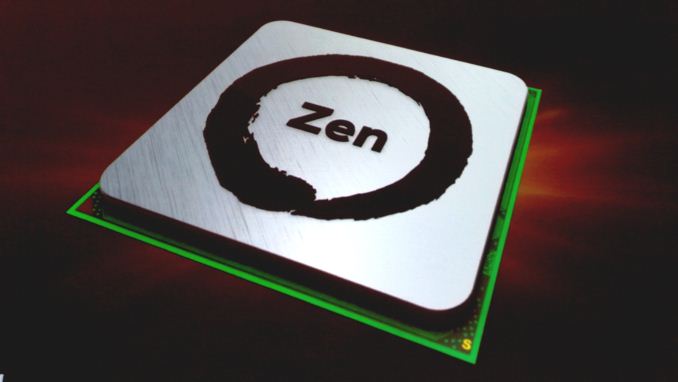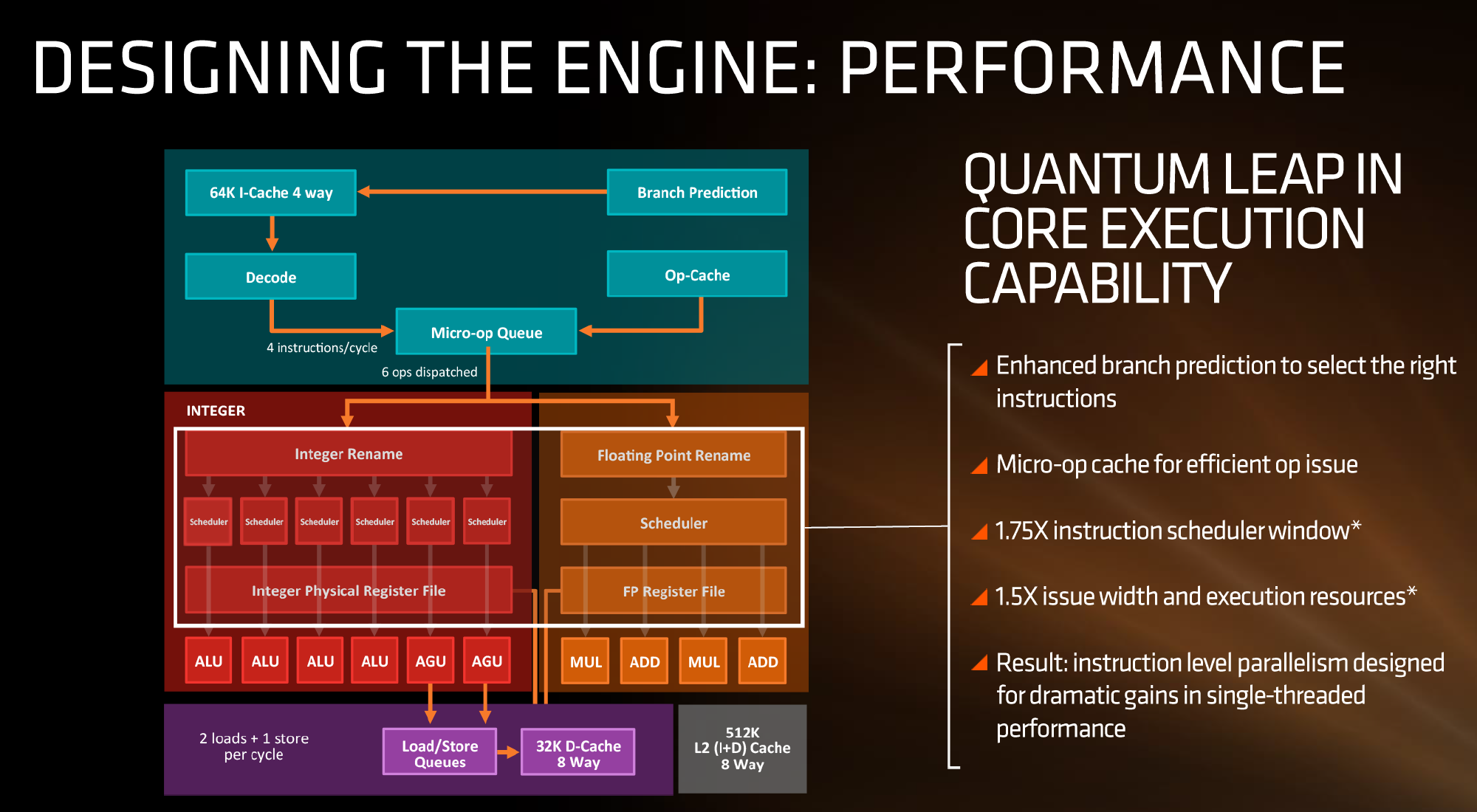AMD Zen Microarchitecture: Dual Schedulers, Micro-Op Cache and Memory Hierarchy Revealed
by Ian Cutress on August 18, 2016 9:00 AM EST
In their own side event this week, AMD invited select members of the press and analysts to come and discuss the next layer of Zen details. In this piece, we’re discussing the microarchitecture announcements that were made, as well as a look to see how this compares to previous generations of AMD core designs.
AMD Zen
Prediction, Decode, Queues and Execution
First up, let’s dive right into the block diagram as shown:
If we focus purely on the left to start, we can see most of the high-level microarchitecture details including basic caches, the new inclusion of an op-cache, some details about decoders and dispatch, scheduler arrangements, execution ports and load/store arrangements. A number of slides later in the presentation talk about cache bandwidth.
Firstly, one of the bigger deviations from previous AMD microarchitecture designs is the presence of a micro-op cache (it might be worth noting that these slides sometimes say op when it means micro-op, creating a little confusion). AMD’s Bulldozer design did not have an operation cache, requiring it to fetch details from other caches to implement frequently used micro-ops. Intel has been implementing a similar arrangement for several generations to great effect (some put it as a major stepping stone for Conroe), so to see one here is quite promising for AMD. We weren’t told the scale or extent of this buffer, and AMD will perhaps give that information in due course.
Aside from the as-expected ‘branch predictor enhancements’, which are as vague as they sound, AMD has not disclosed the decoder arrangements in Zen at this time, but has listed that they can decode four instructions per cycle to feed into the operations queue. This queue, with the help of the op-cache, can deliver 6 ops/cycle to the schedulers. The reasons behind the queue being able to dispatch more per cycle is if the decoder can supply an instruction which then falls into two micro-ops (which makes the instruction vs micro-op definitions even muddier). Nevertheless, this micro-op queue helps feed the separate integer and floating point segments of the CPU. Unlike Intel who uses a combined scheduler for INT/FP, AMD’s diagram suggests that they will remain separate with their own schedulers at this time.
The INT side of the core will funnel the ALU operations as well as the AGU/load and store ops. The load/store units can perform 2 16-Byte loads and one 16-Byte store per cycle, making use of the 32 KB 8-way set associative write-back L1 Data cache. AMD has explicitly made this a write back cache rather than the write through cache we saw in Bulldozer that was a source of a lot of idle time in particular code paths. AMD is also stating that the load/stores will have lower latency within the caches, but has not explained to what extent they have improved.
The FP side of the core will afford two multiply ports and two ADD ports, which should allow for two joined FMAC operations or one 256-bit AVX per cycle. The combination of the INT and FP segments means that AMD is going for a wide core and looking to exploit a significant amount of instruction level parallelism. How much it will be able to depends on the caches and the reorder buffers – no real data on the buffers has been given at this time, except that the cores will have a +75% bigger instruction scheduler window for ordering operations and a +50% wider issue width for potential throughput. The wider cores, all other things being sufficient, will also allow AMD’s implementation of simultaneous multithreading to potentially take advantage of multiple threads with a linear and naturally low IPC.











216 Comments
View All Comments
pogostick - Friday, August 19, 2016 - link
What's all this bickering about AMD and Intel. Open your eyes people. There is only one master x86 cpu company and it is VIA. Soaring on their successful acquisition of the Cyrix remains, they've forged ahead to make blisteringly fast products like their 64 bit QuadCore E-Series. It beats everything but my wife. Geez. You guys are CLUELESS.AndrewJacksonZA - Friday, August 19, 2016 - link
Hahahahaha!belph - Friday, August 19, 2016 - link
Competition is back (?)patel21 - Friday, August 19, 2016 - link
Yes sir, it sure is.Rickkins1 - Friday, August 19, 2016 - link
Without the competition that AMD provides, Intel cpu's would be priced out of range for most people.Michael Bay - Friday, August 19, 2016 - link
And then you remember that AMD didn`t provide any competition worth of note for the past eight years.just4U - Friday, August 19, 2016 - link
Ofcourse they did.. just not on the highest end of the scale. The PII was a great chip. The FX line is decent but hasn't really seen much love.. and their APU is an excellent product.Meteor2 - Friday, August 19, 2016 - link
Quite. Intel have only been competing against themselves these last years.Makaveli - Friday, August 19, 2016 - link
If that is true then why haven't Intel prices increase substantially in the last 10 year where AMD has not been competitive?Maybe because Intel competes with their own previous gen chips. AMD being the reason for Intel's keeping prices in check only works when they have a product that competes and forces them to.
BMNify - Friday, August 19, 2016 - link
so, what did AMD do to improve generic x264/x265 data throughput on 10bit 1080P and especially UHD1 rec.2020 software encoding throughput ?what did AMD do to improve ffmpeg and related downstream hardware UHD1 encoding/streaming etc.